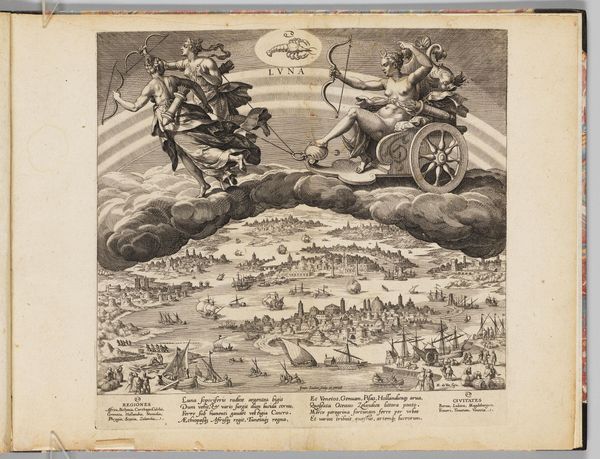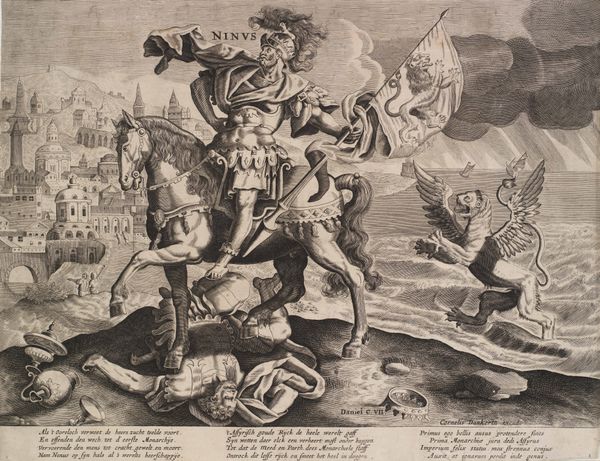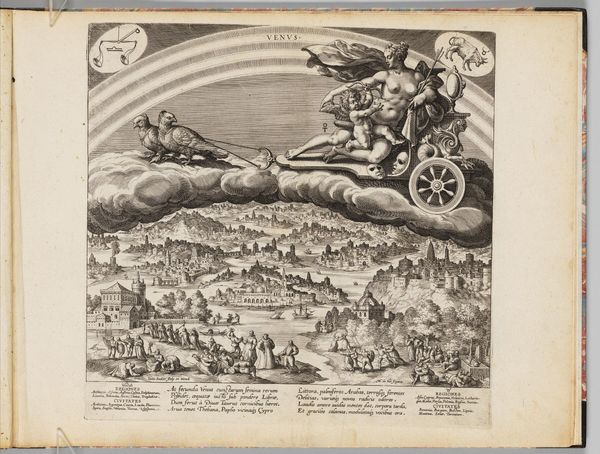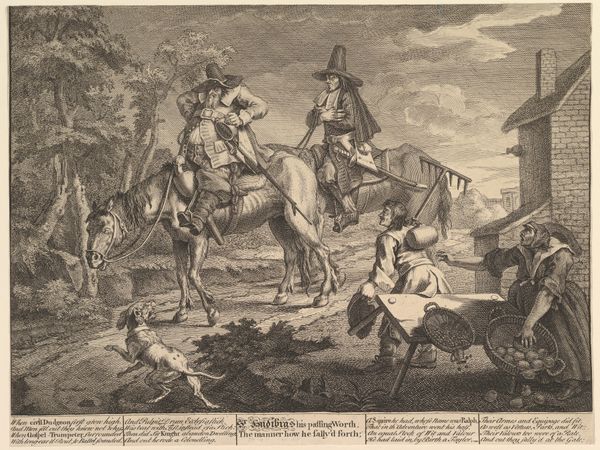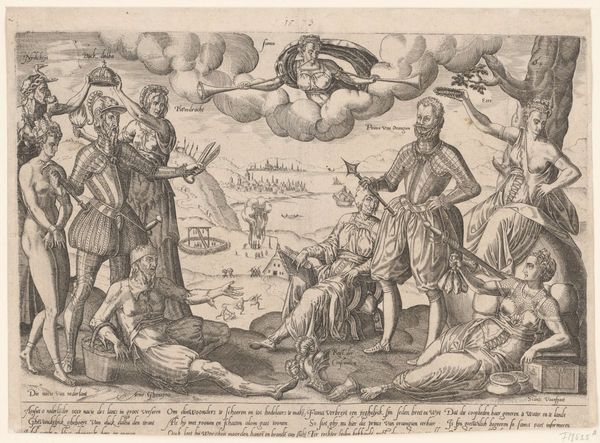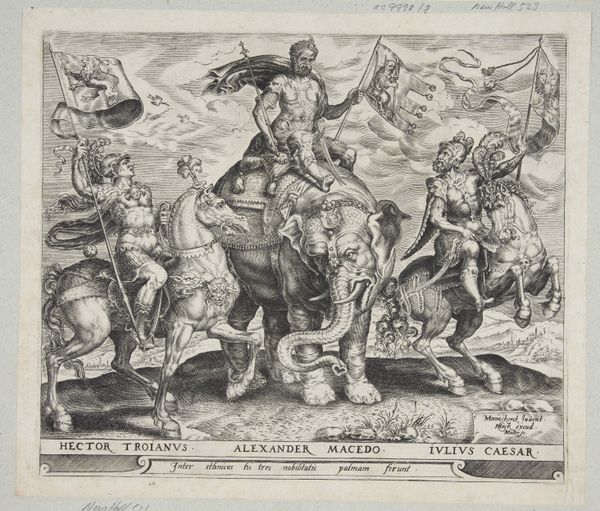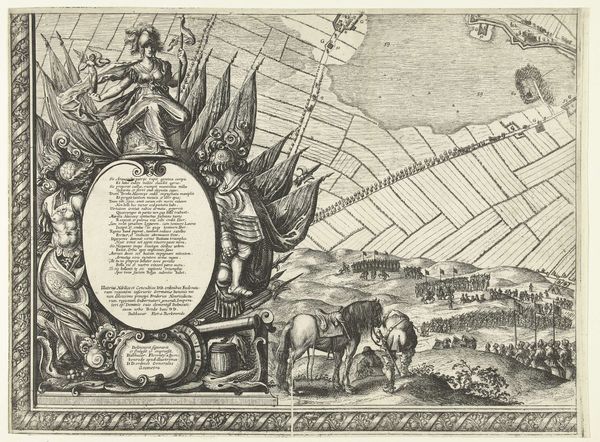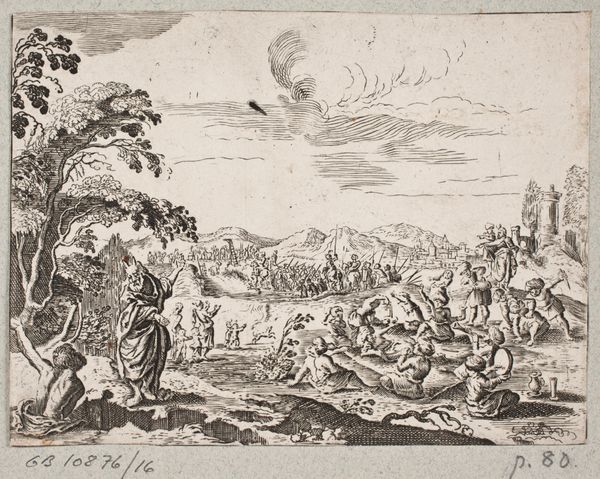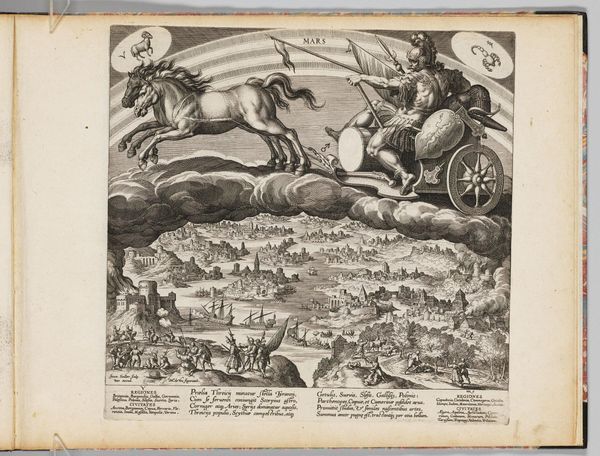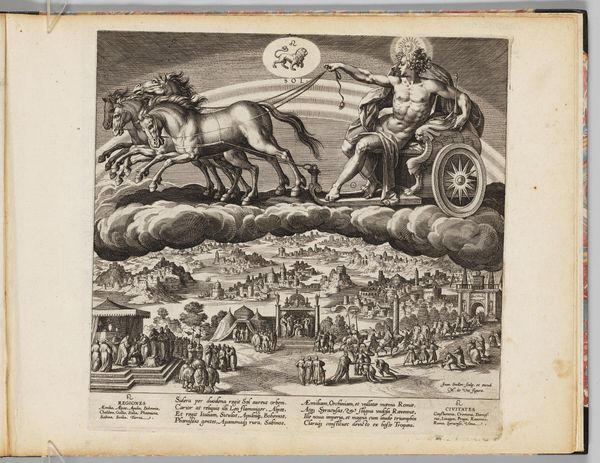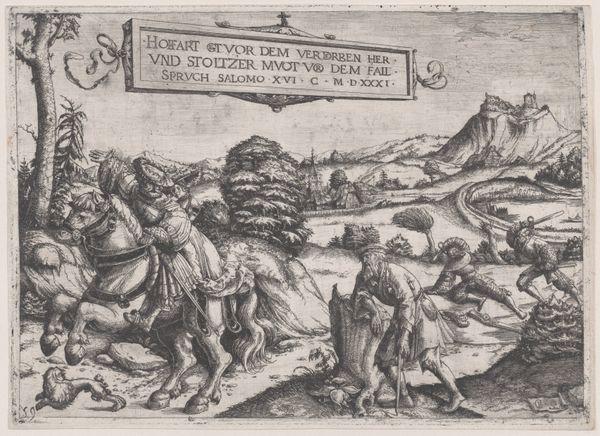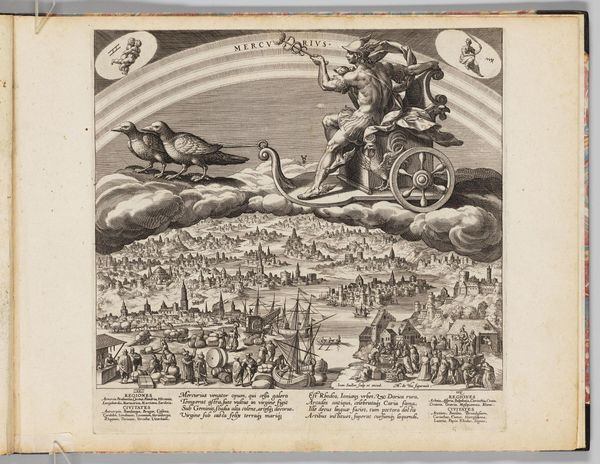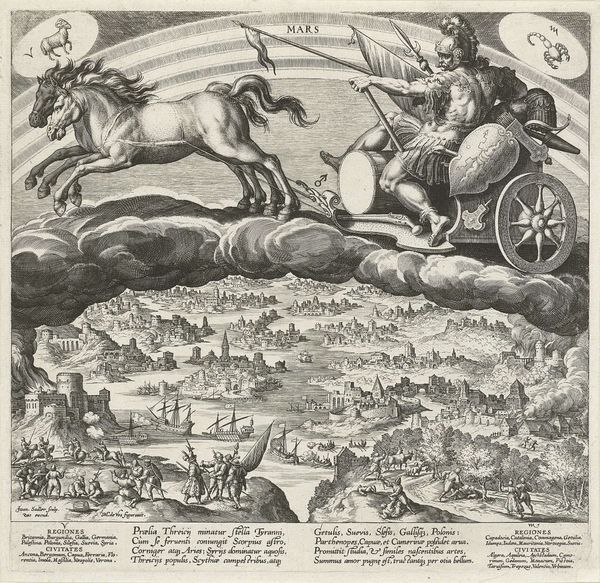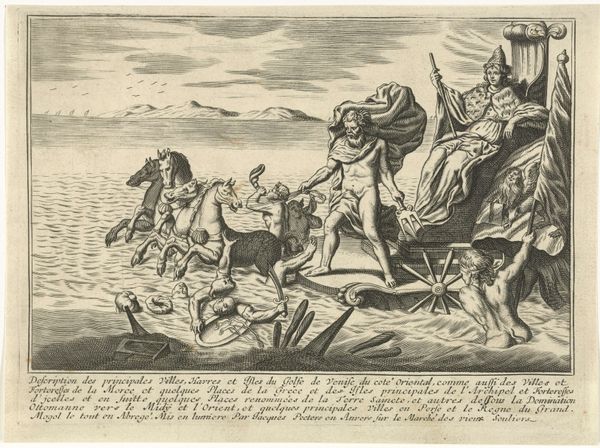
print, etching
#
narrative-art
# print
#
etching
#
landscape
#
genre-painting
Dimensions: 192 mm (height) x 241 mm (width) (plademaal)
Curator: Look at the whimsical scene captured in this etching by Albert Flamen, dating back to 1660, titled "Bakkus' Triumf". I’m struck immediately by how lighthearted it feels despite being rendered in monochrome. The composition, a layered landscape receding into the distance, invites you into a world brimming with revelry. Editor: Indeed, there is a celebratory air permeating the entire composition, and the historical context tells us so much more about the production and reception of this etching. What story does this tell? Curator: Well, Flamen here depicts Bacchus, the Roman god of wine, riding a donkey through the countryside accompanied by his entourage. The landscape itself seems to reflect the abundance and joy associated with Bacchus, its rolling hills suggestive of fertile vineyards. We see groups carousing on the side and townspeople greeting this scene of revelry, but this image hints at an interesting gendered aspect when considering the role of the Patriach to his immediate right, just below a group of fair skinned revelers, this tells me the landscape may signify social stratification. What are your thoughts? Editor: I appreciate how you've highlighted the social and power structures encoded within the supposedly "whimsical" image. From a historical perspective, this work offers us a glimpse into 17th-century attitudes towards festivity and leisure, where classical imagery was deployed to legitimize social gatherings and traditions within the cultural sphere. The prominent text atop the picture certainly draws our attention as it is meant to inform us, in a sense. Curator: The choice of etching as a medium, readily reproducible, points towards a wider dissemination of these ideals and aesthetics. This brings up interesting questions about the social role of images and their accessibility. Was it truly available to everyone or targeted towards a specific, elite audience? Is Bakkus a liberator or ruler, with the townspeople depicted only there to greet him? Editor: Exactly! Examining the materiality of the print, its size, the paper used, all contribute to our understanding of its intended market and social impact. Etchings, by their nature, were more accessible than unique paintings, which allows us to see Flamen tapping into an existing cultural appetite. Curator: Considering the period’s art market helps uncover deeper nuances than what appears simply celebratory, wouldn't you agree? Editor: Most definitely. By questioning and expanding traditional interpretations of art like Flamen's etching, we create space for broader dialogues and more nuanced readings, encouraging people to seek out complexity.
Comments
No comments
Be the first to comment and join the conversation on the ultimate creative platform.
